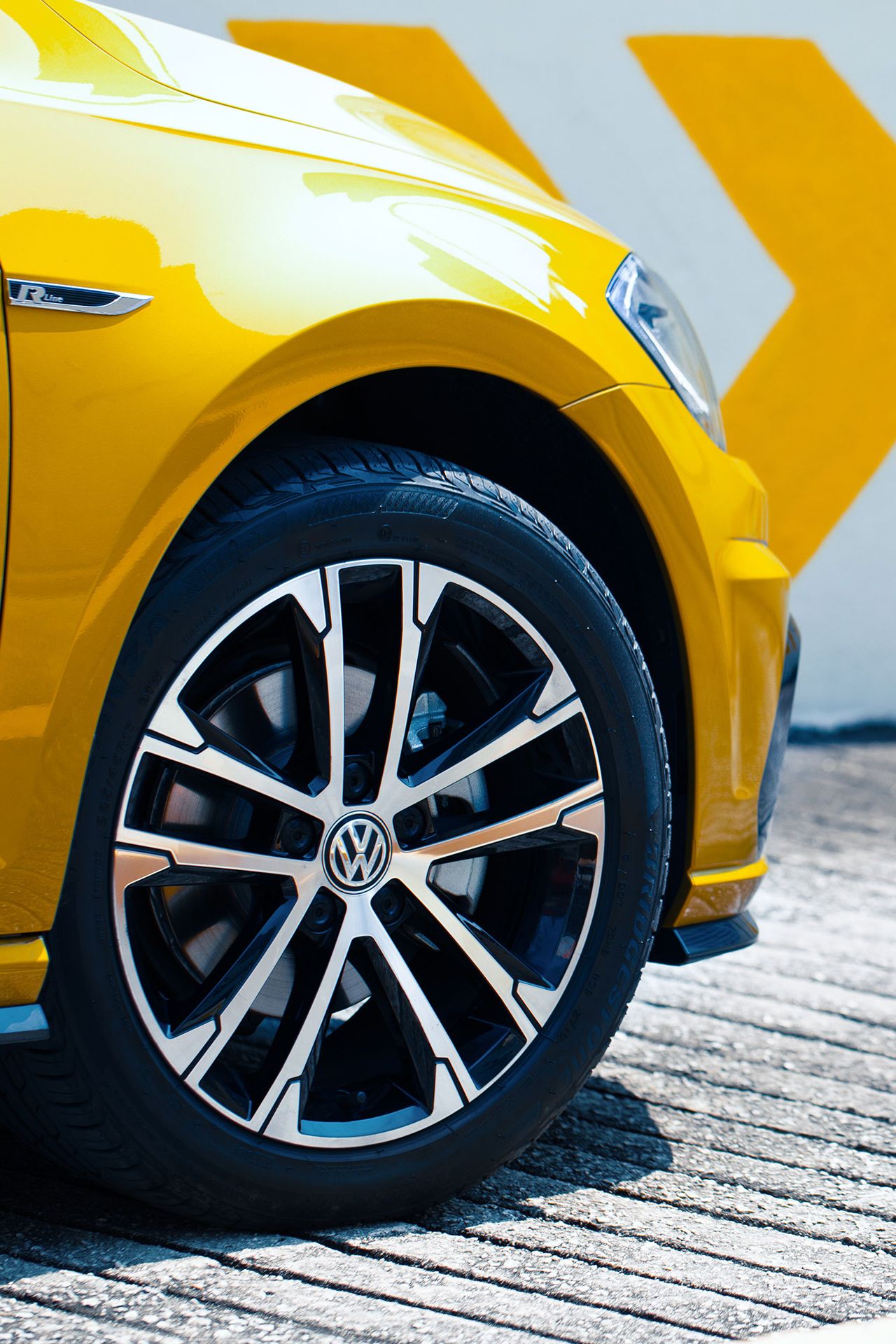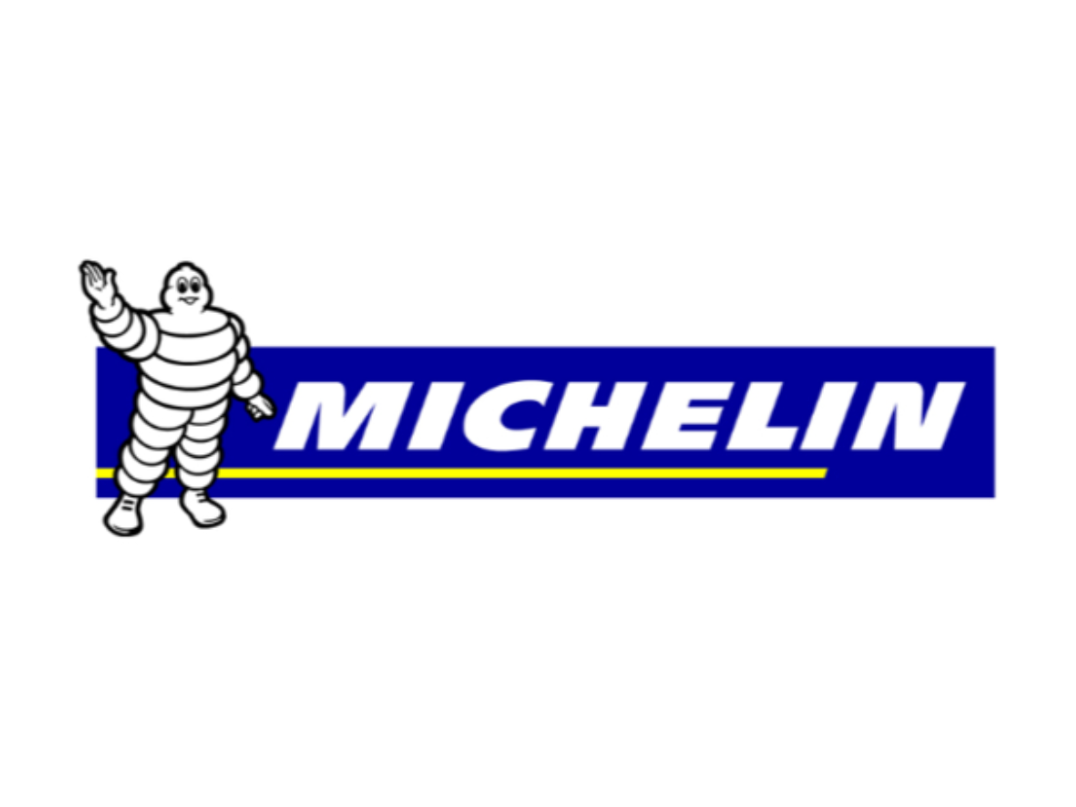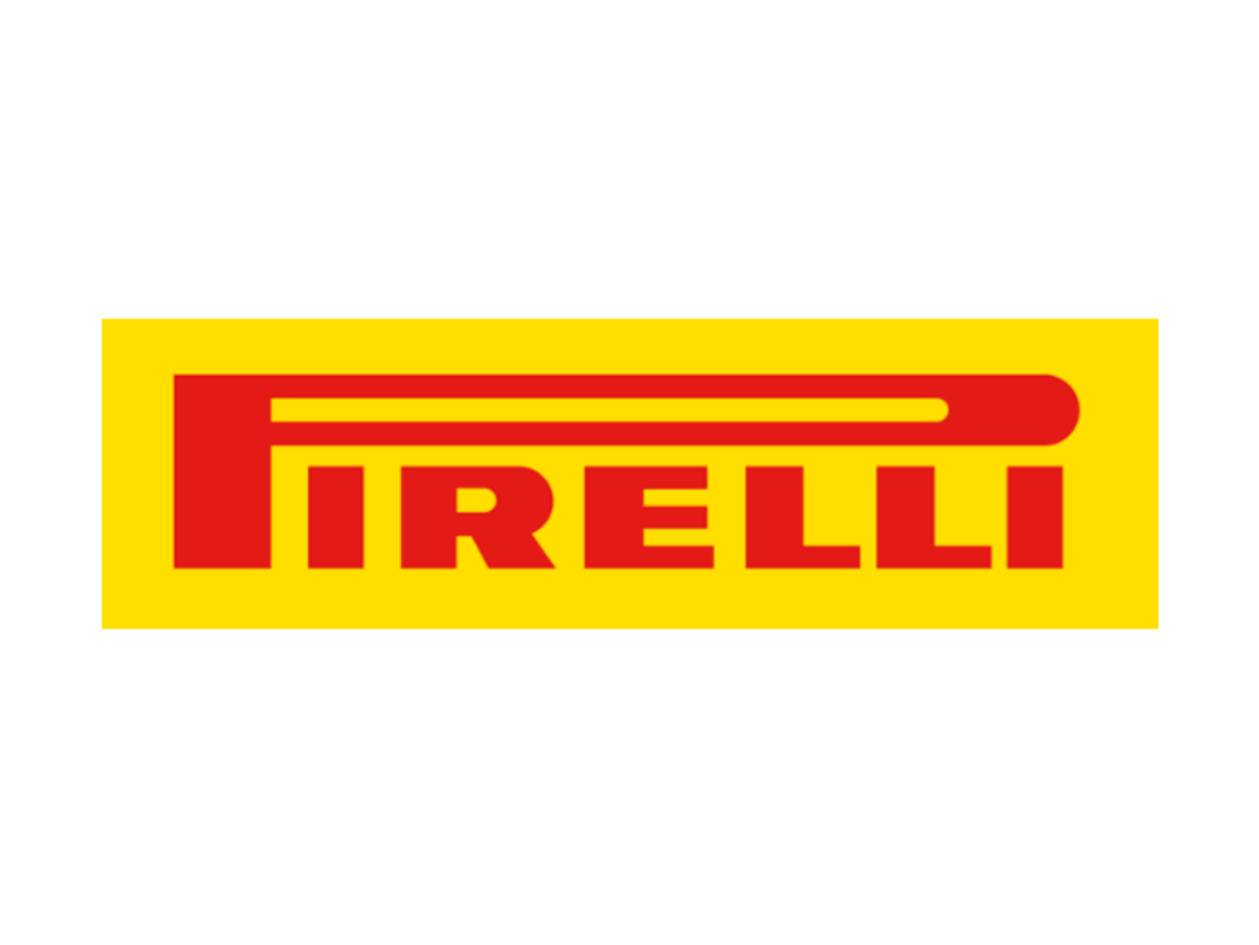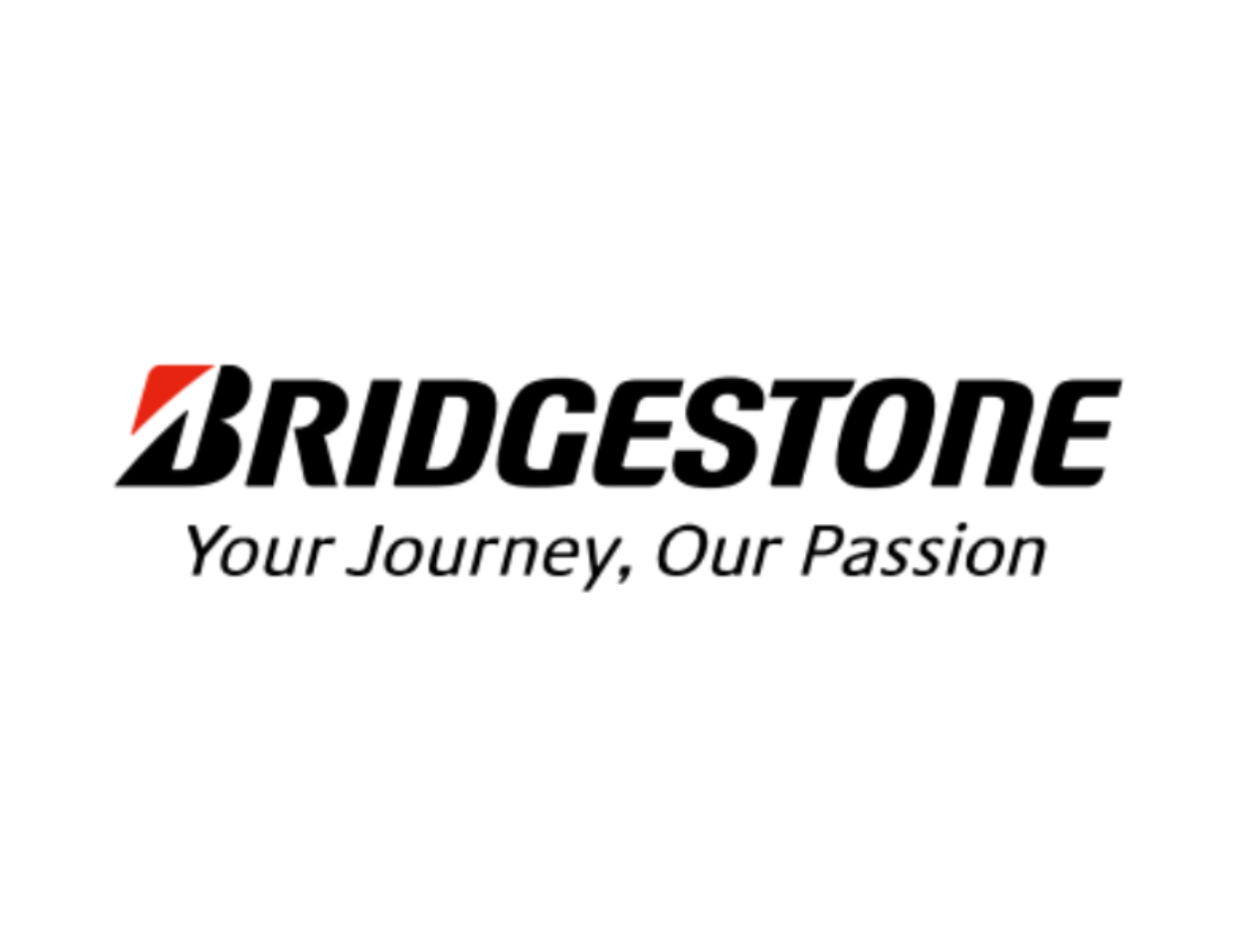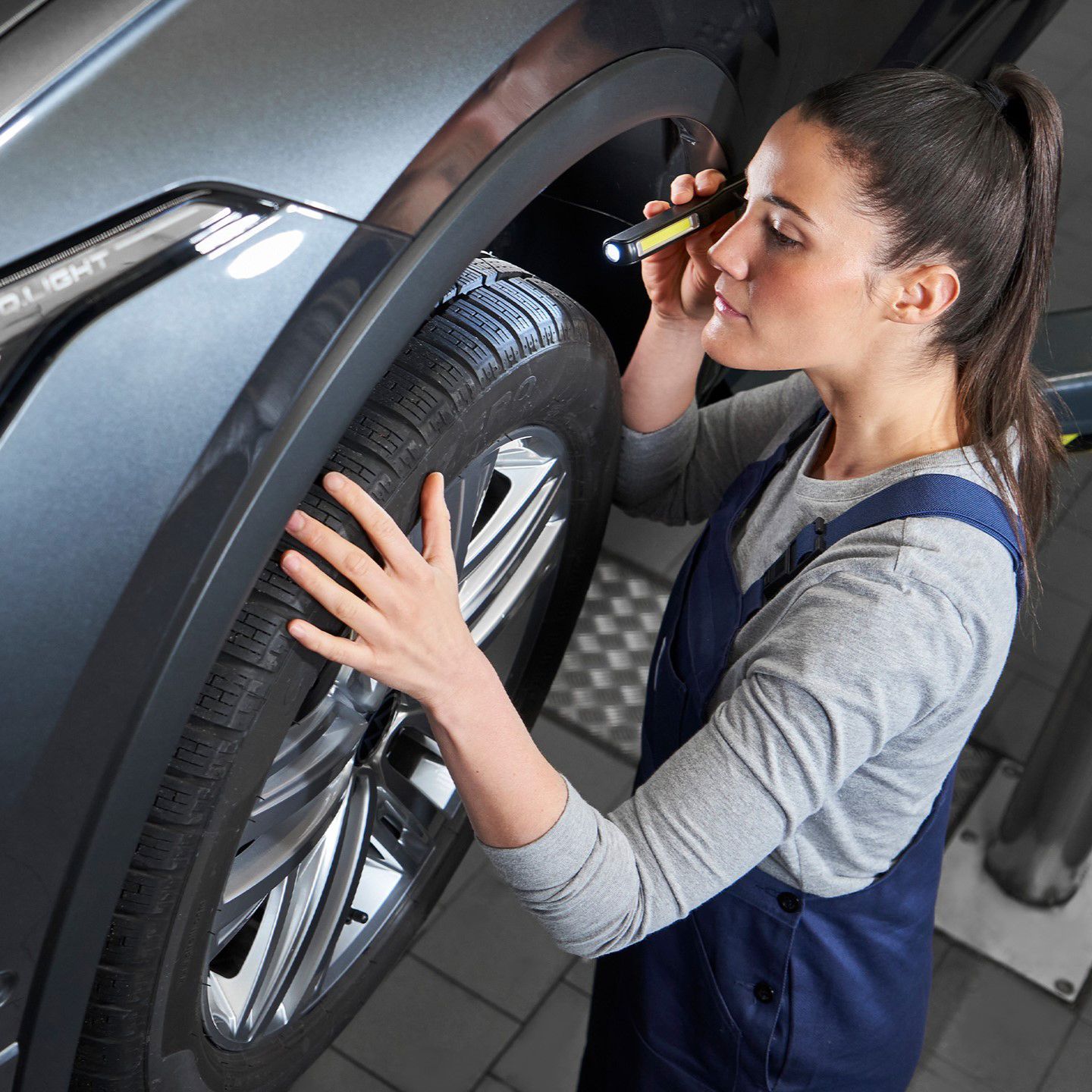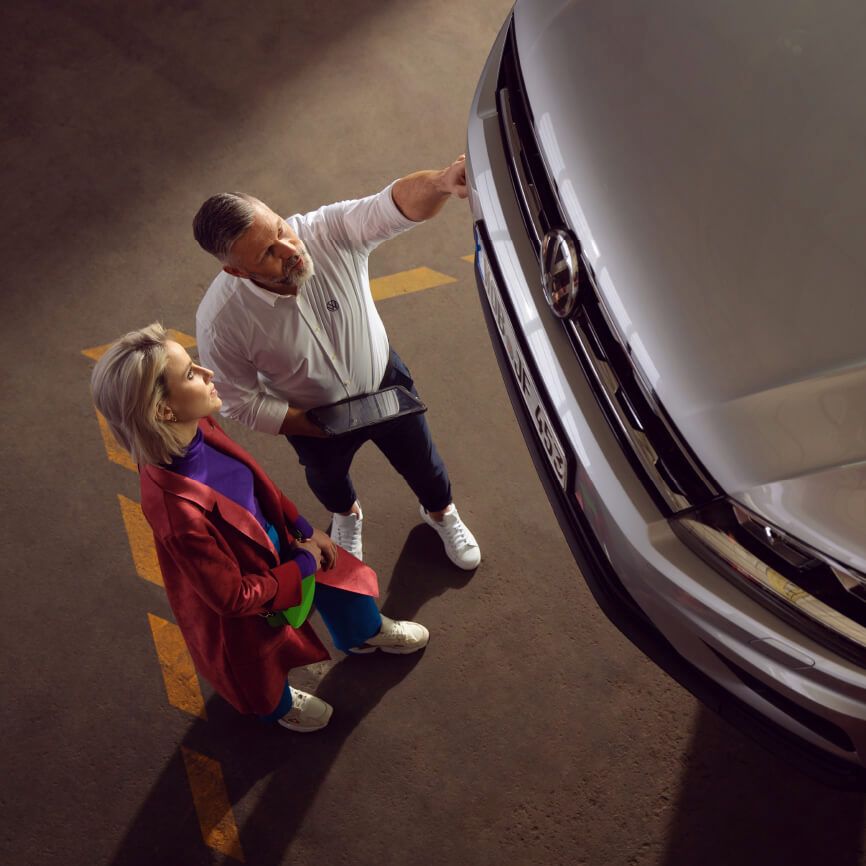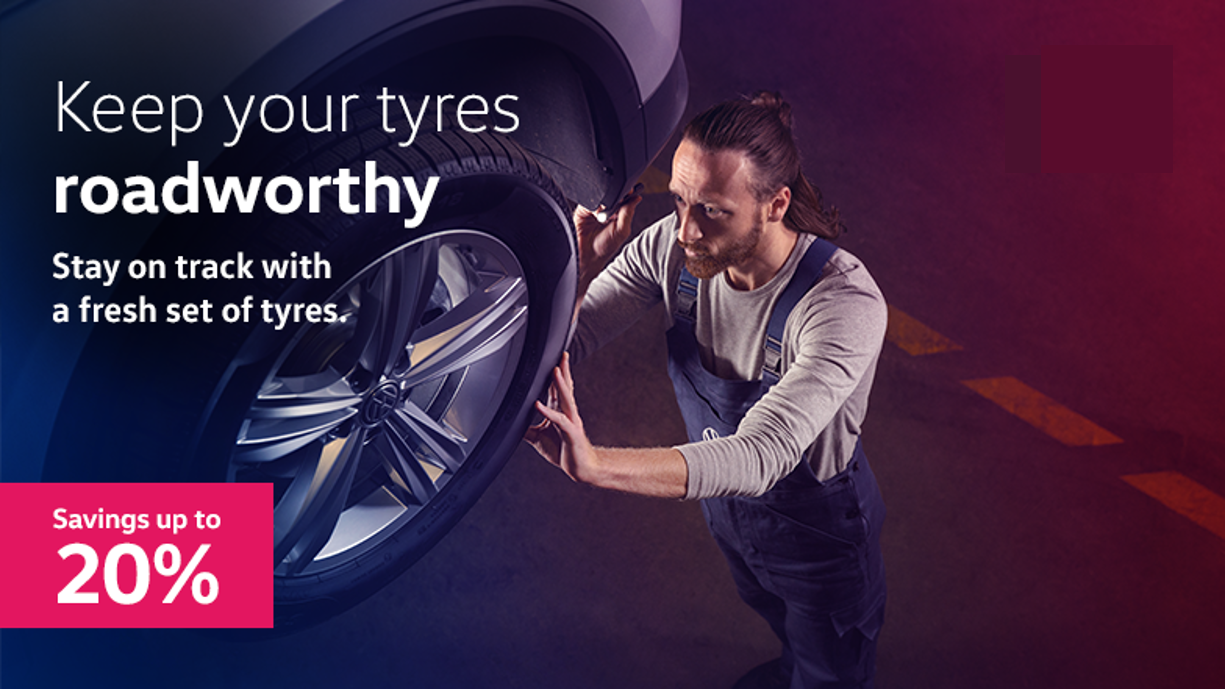
Tyre promotions
Enjoy up to 20% off on your next tyre purchase and enjoy great savings.
More value and complimentary services.
Get it now at your nearest authorised Volkswagen service centre.
Your tyres are your only contact with the road. Discover information and tips concerning your tyres - right here.
Has the tyre pressure reduced considerably or is the tyre showing structural damage?
Drive more slowly, avoid heavy steering and braking manoeuvres and check your tyres as quickly as possible. Does everything seem OK, but the light is still illuminated? Have the system checked by an expert.
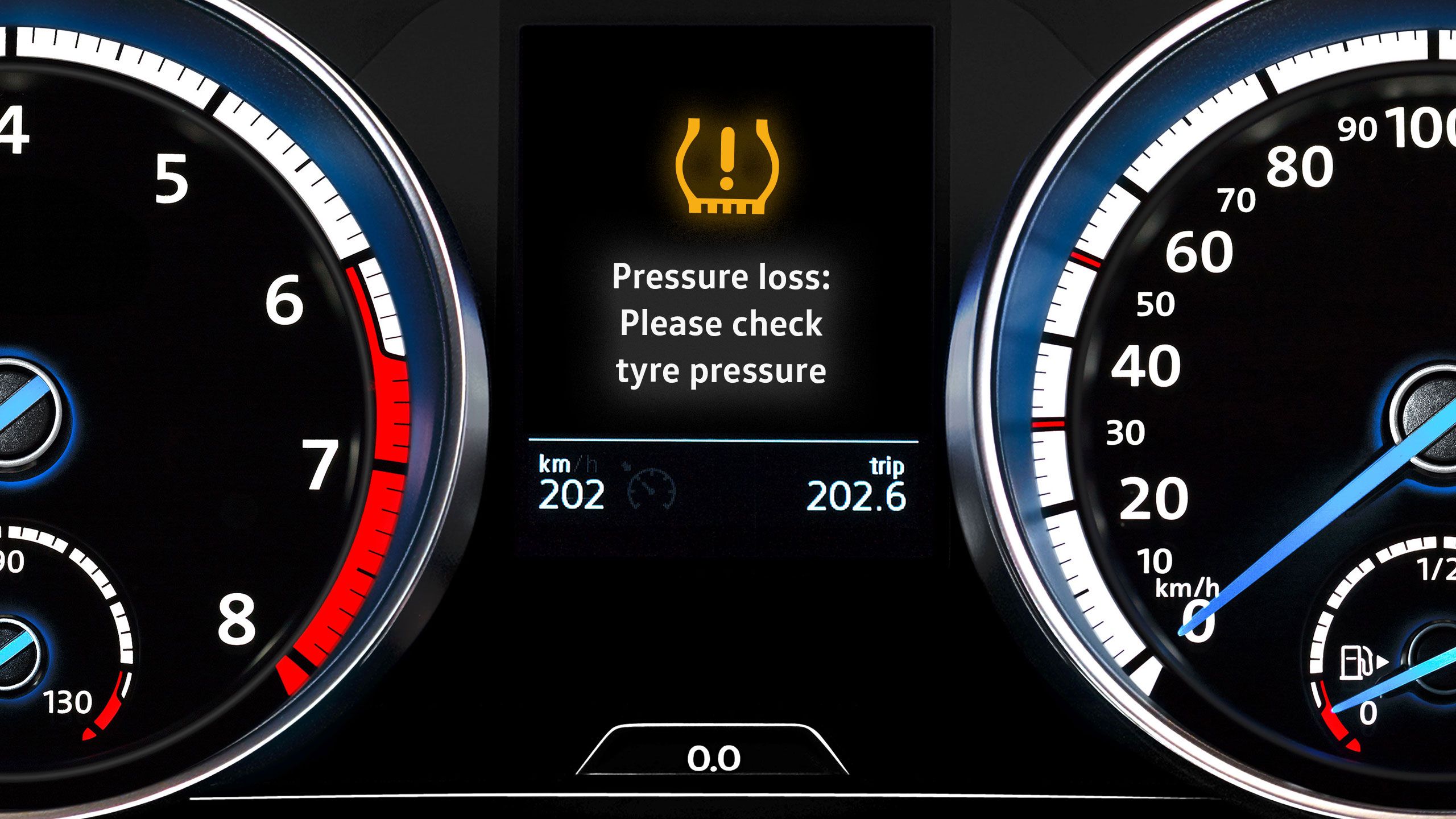
225/45 R17 94 W - explained in seven steps
What do the numbers on my tyres mean? In addition to the manufacturer and product name, you will find a lot of important tyre information, such as the type of tyre, rim diameter and maximum speed on your tyres.
It is measured from the sidewall to the sidewall of your tyre. Car tyres are between 125 and 335 mm wide.
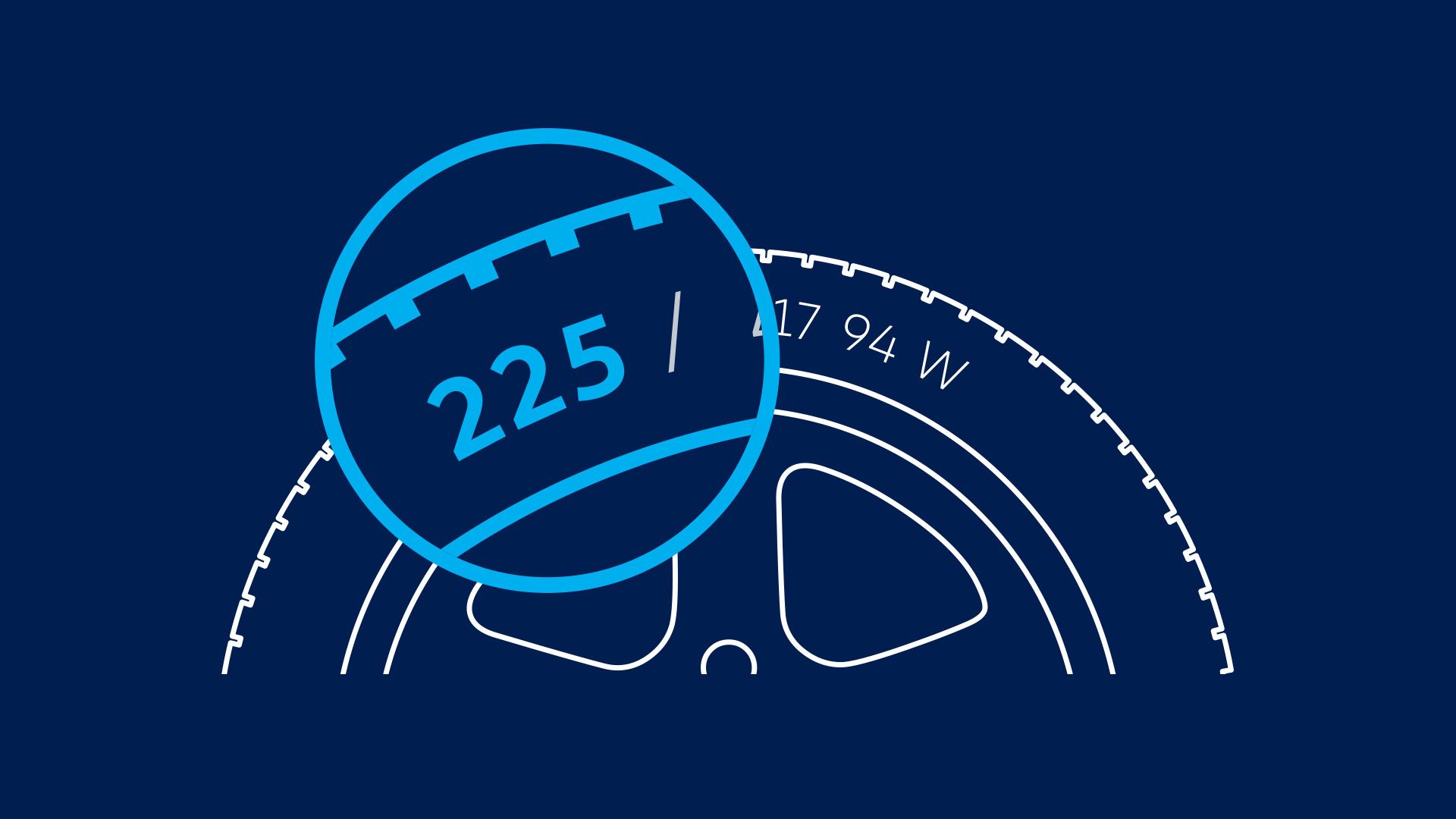
How high is the tyre compared to the width of its cross section in percent? The smaller the number, the lower the tyre's sidewall.
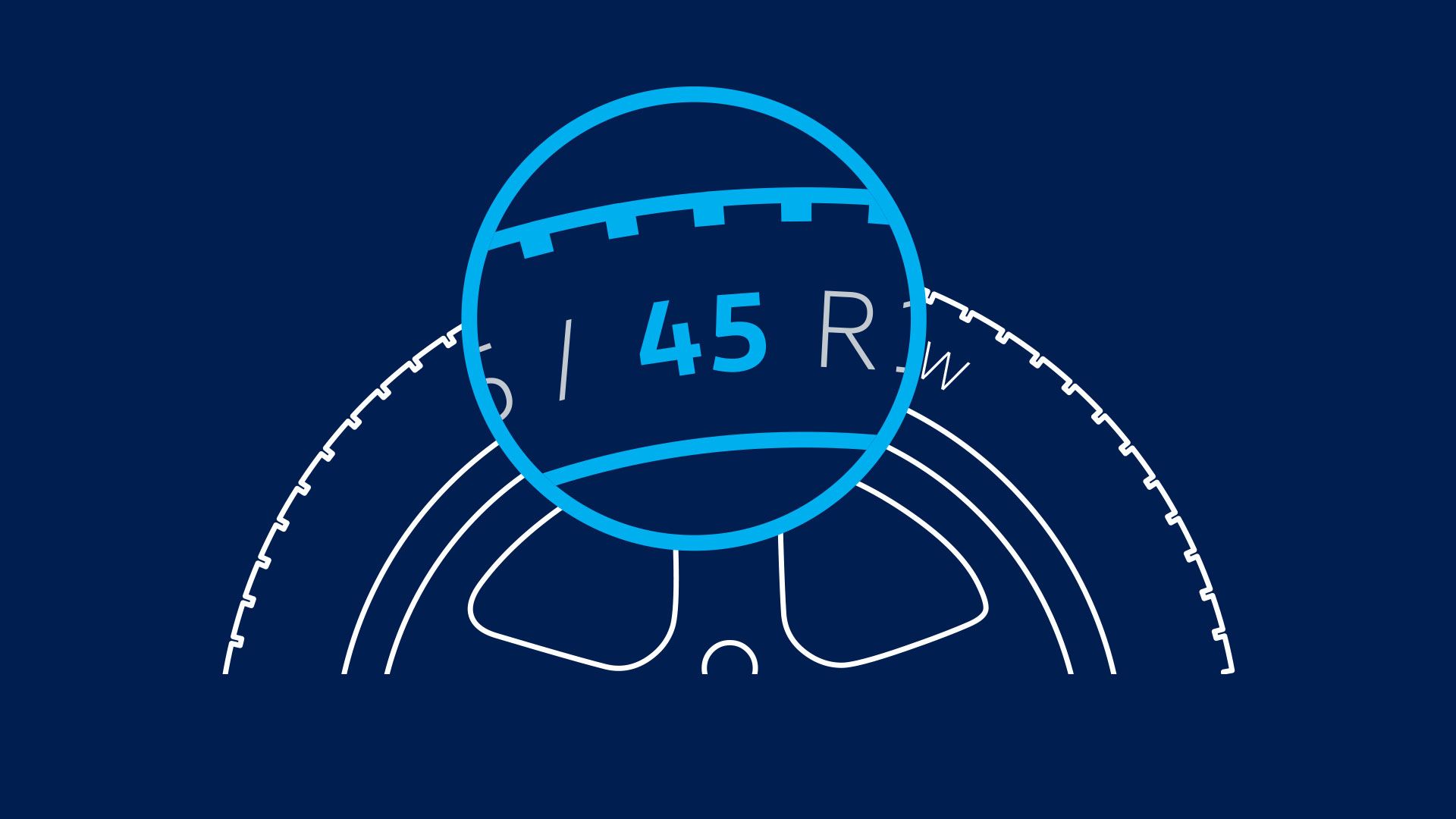
The tyre carcass consists of fine cord threads.
R (radial tyre): The threads run at right angles to the direction of travel.
D (diagonal tyre's): The threads run at an angle. R and D tyre's must not be combined.
RF (Run Flat Tyre): Self-supporting tyre with run-flat properties.
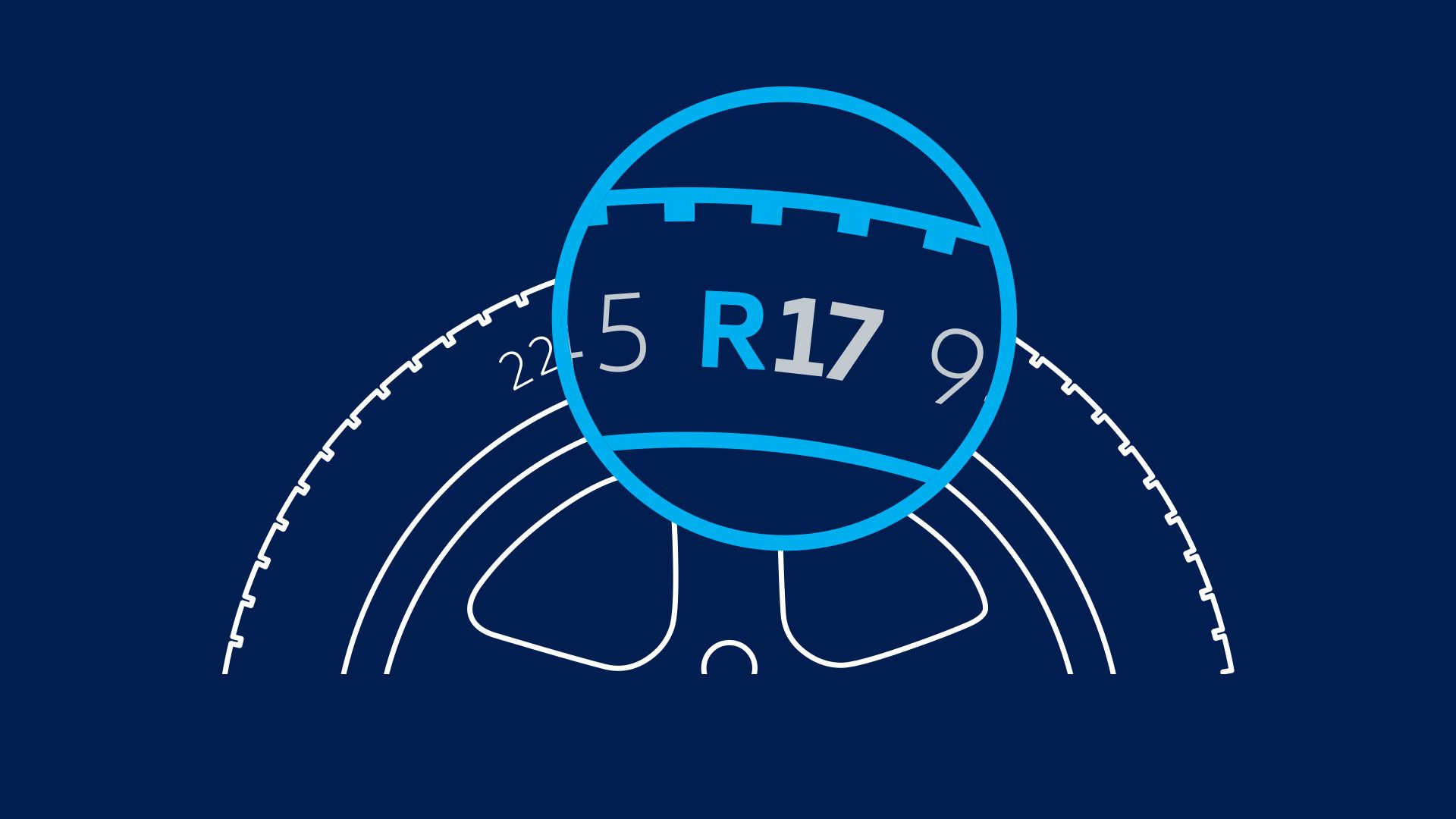
It is measured from rim edge to rim edge. 10 to 20 "are common.
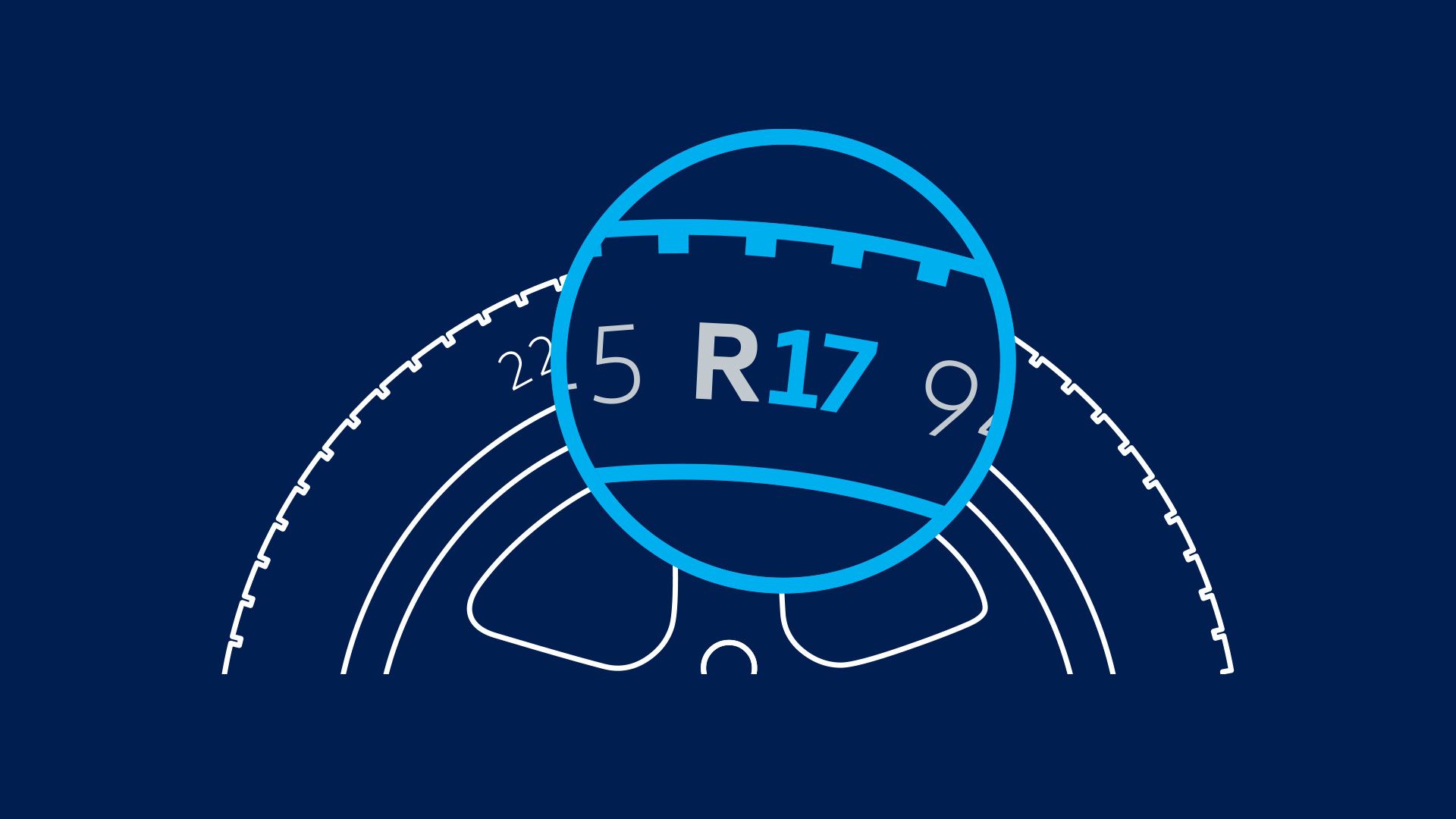
Indicates the maximum load capacity of the tyre in connection with its maximum speed. At 94, e.g. B. approved a maximum of 670 kg.
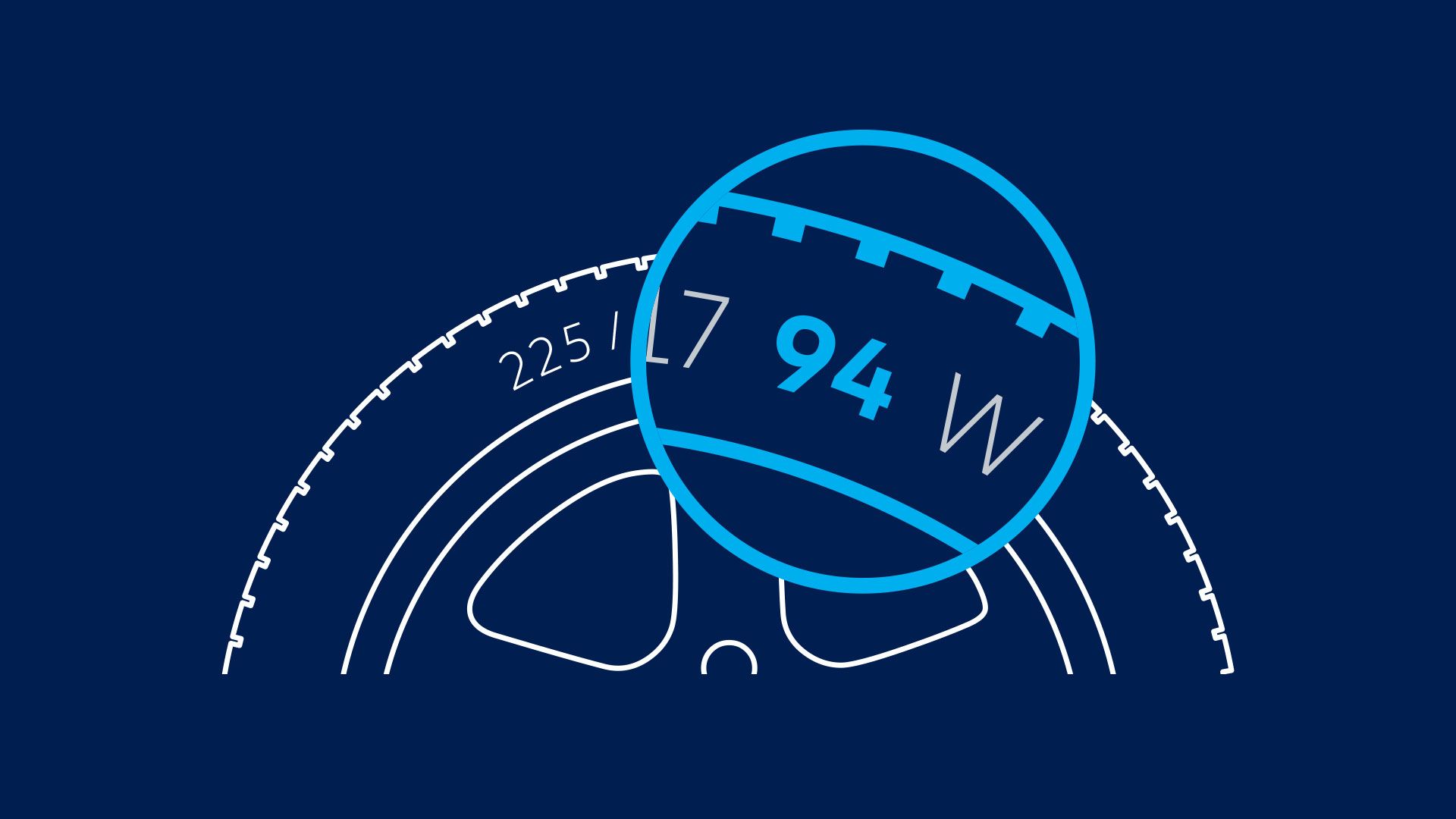
The permissible maximum speed is to be seen in connection with the load index. The load capacity of the tyre's can decrease at high speeds.
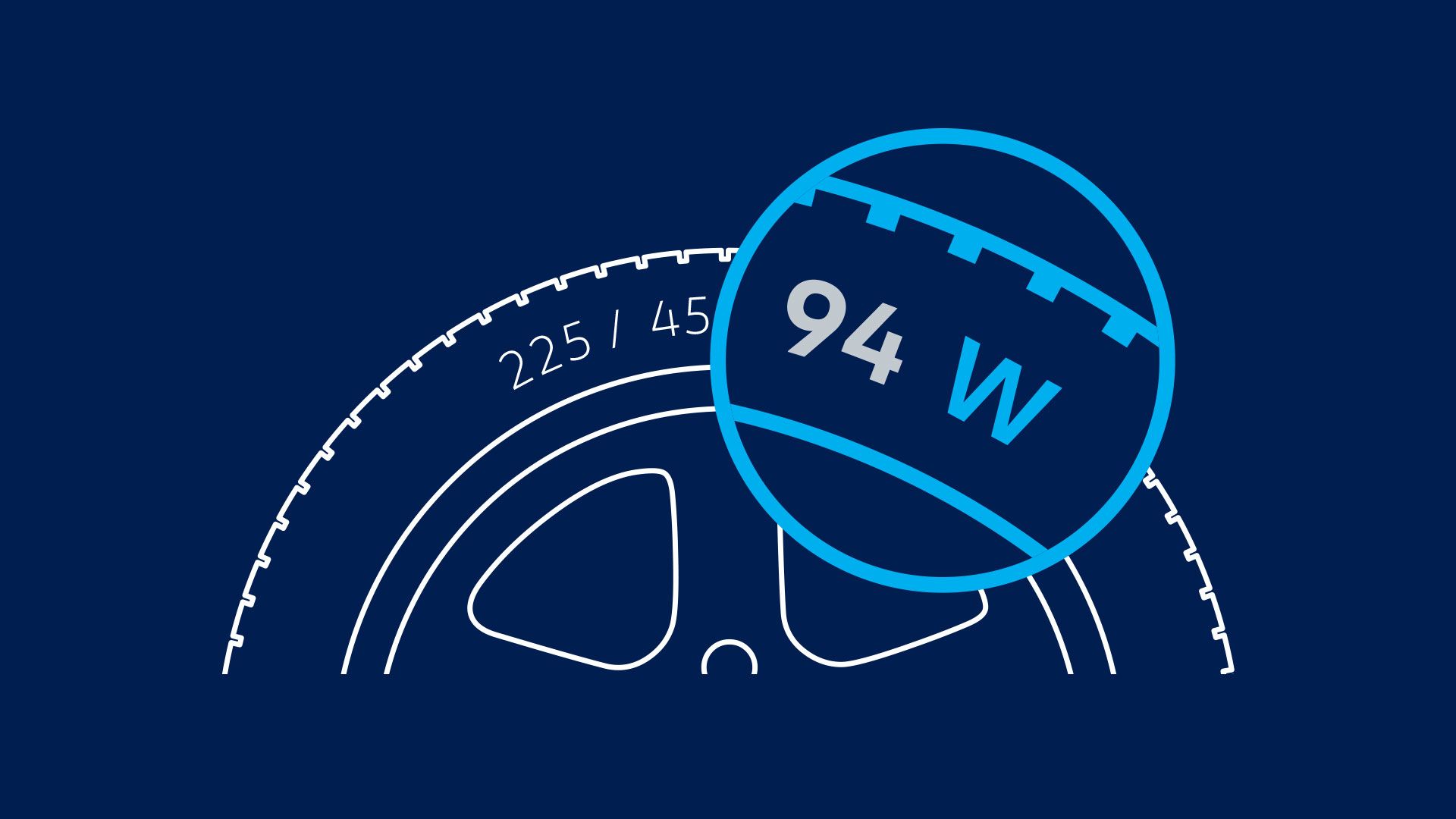
You will find the so-called Date of Manufacture number on at least one side of the tyre. It provides information about the date of manufacture. The last four numbers are relevant here. The first two digits indicate the week of production as a calendar week and the last two as the year of production.
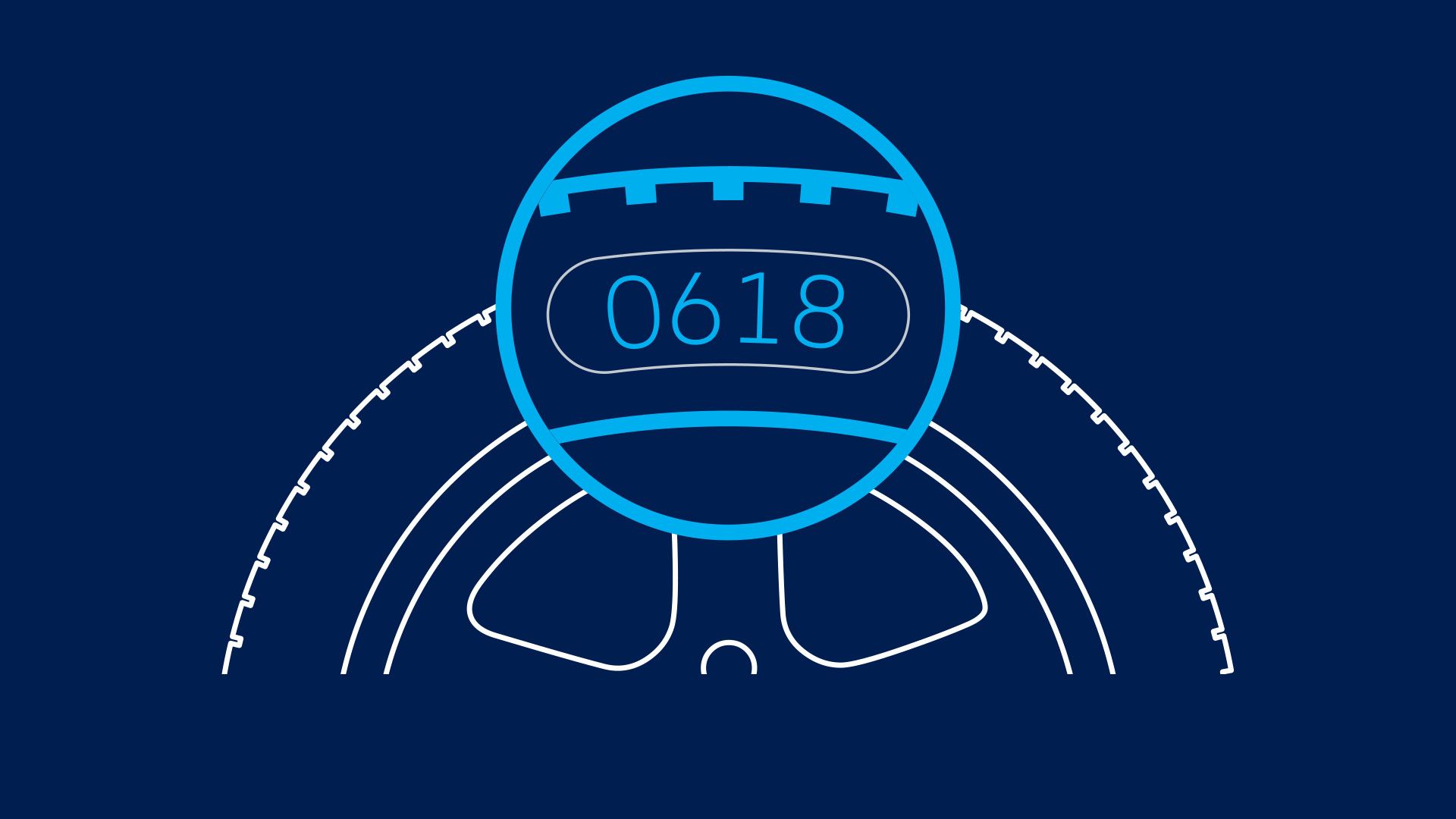
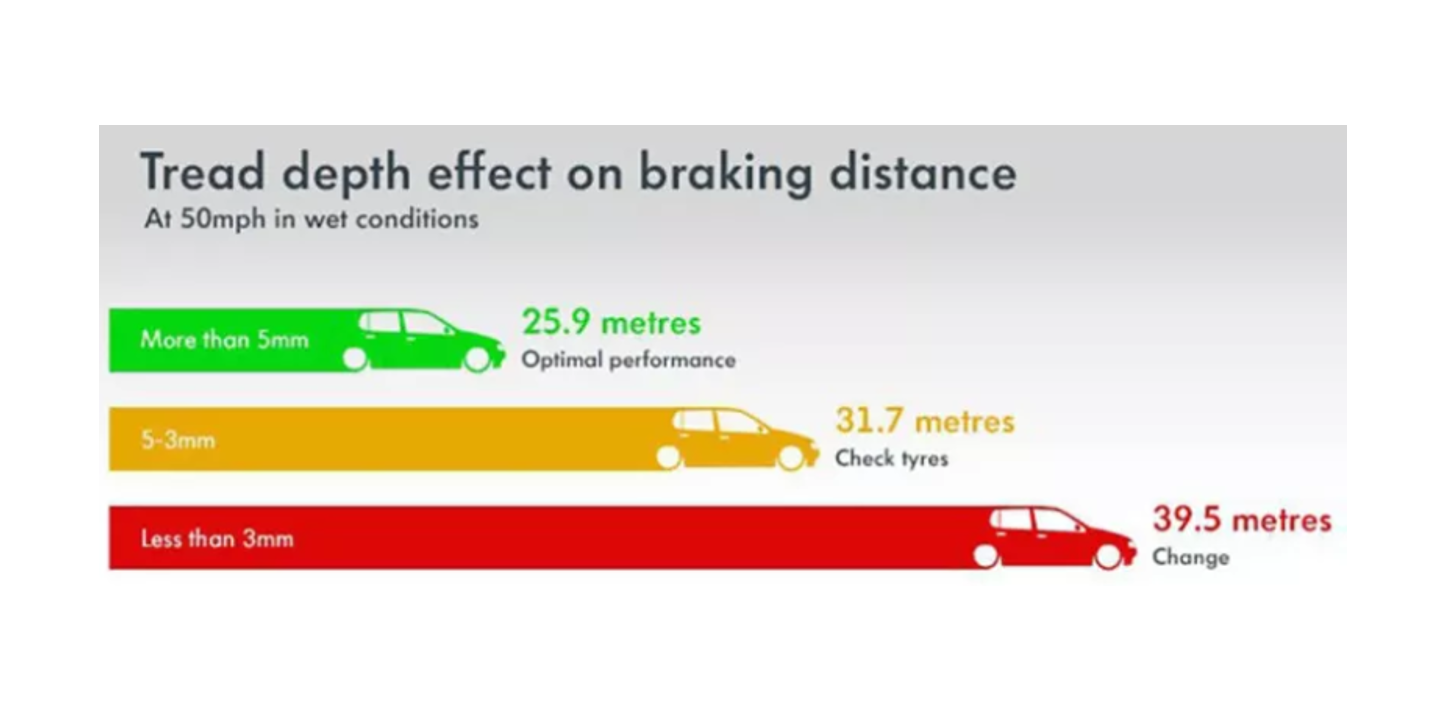
Tread depth and braking distance
Adequate tread depth is essential to your safety as the tyre tread helps to remove water from the road surface allowing your tyre to grip the road. As your tyre tread depth wears down, its ability to remove water and grip in the wet is reduced, compromising your safety.
The recommended minimum tread depth for a car tyre is 1.6mm across the central three quarters of the tyre around its entire circumference.
We'll gladly check your tyres' tread depth, but if you'd like to do it yourself all you need is 20 cents.
Checking that your tyres comply with the minimum tread depth regulations is easy and should be carried out on a regular basis - we recommend once a month. The most accurate method is to use a calibrated tread depth gauge, checking the depth in at least three points around the tyre.
If you don't have a calibrated tread depth gauge, a quick and easy way to check is by using a 20 cents coin. Simply place the coin into the main tread of your tyre. If the marked rim of the coin doesn't totally disappear into the tread, it should be checked by your authorised Volkswagen service centre.
If your tyres need to be replaced, we have selection of tyre brands at competitive prices.
Tyre damage
Damages to the tyre put your safety and the safety of fellow road users at risk.
Abrasion points are generally found on the tyre sidewall. These are not wear-and-tear marks caused by simple road use - they are the result of e.g. bumping the kerb. Abrasion points are often dismissed as harmless damages. But: even the vehicle carcass can be damaged by a strong collision. Damages to the carcass are not immediately visible from the outside - making them particularly dangerous. The carcass may break or moisture may seep into the vehicle interior, leading to corrosion of the metal mesh. So, a seemingly harmless abrasion point may lead to the entire tyre becoming unstable. A tyre expert can recognise the pattern of damages - so get in touch with your professional workshop straight away.
Tip:
Do your rims bear clear traces of an impact? Then your tyres might also be affected.
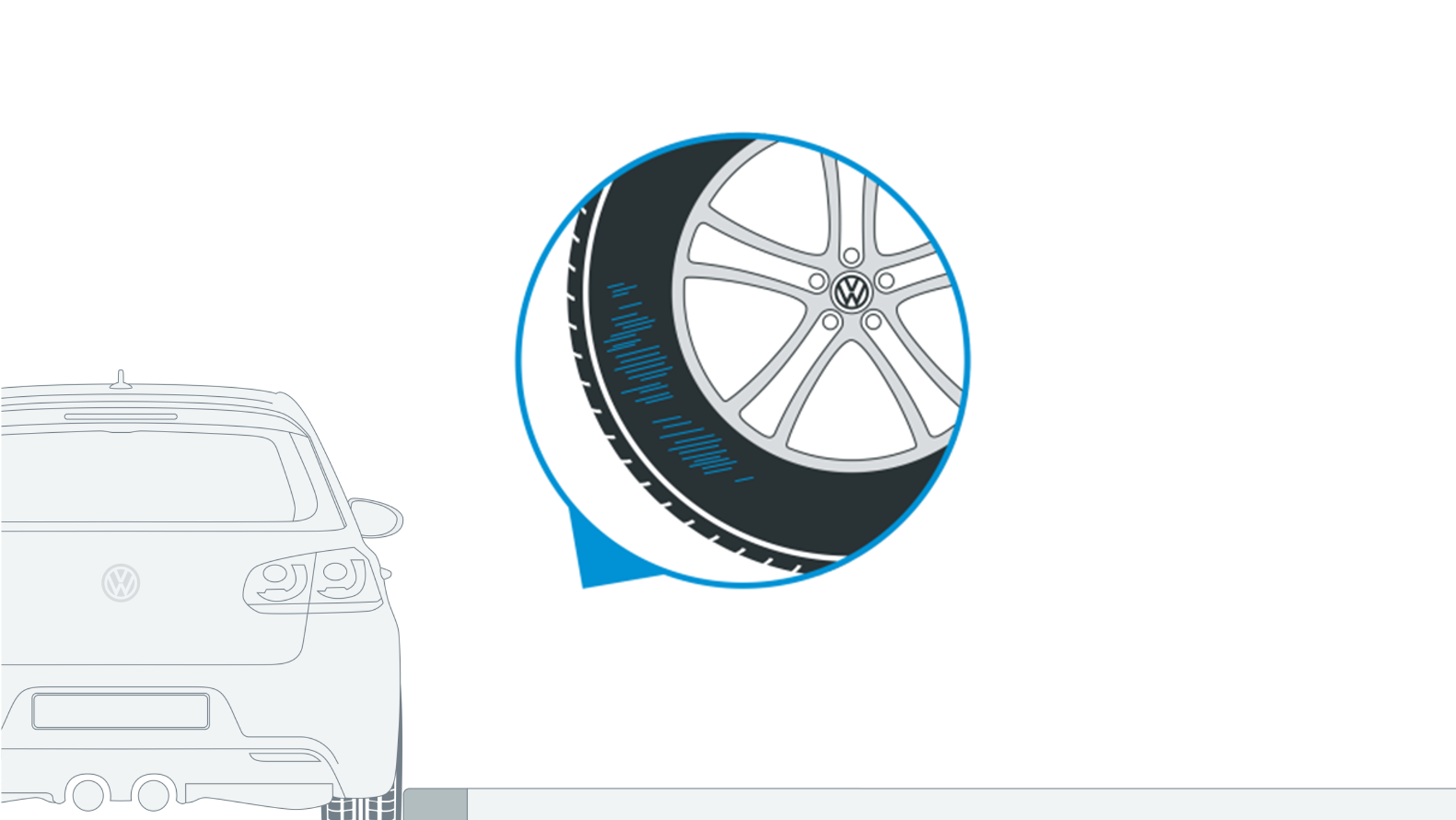
Every now and then, embedded fragments, nails or sharp stones can find their way into the contact surface area. Foreign objects can come into contact with the tyres at any time and any place - especially on gravel surfaces or around construction sites. It's very rare for this to cause the tyre to "burst". It's more likely to cause a dangerous, gradual loss of pressure. What's more, moisture may reach the tyre interior and lead to the corrosion of a steel cord belt. In the worst case scenario, this may cause the tread or the belt to detach. A tyre expert can assess the damages - so get in touch with your professional workshop straight away.
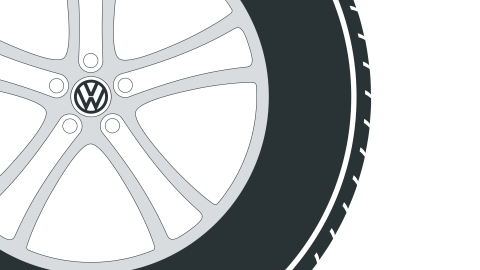
Traces of ageing are not signs of wear-and-tear, but rather damages caused by improper storage. The correct way to store tyres is in a cool, dark and dry environment - and it's important to not stack too many tyres on top of each other. However, if tyres are stored in a place where they are exposed to a lot of sunshine, for example, the UV rays allow the softening agent in the tyres to escape. Over time, this results in the emergence of fine cracks. So, if you notice any cracks, ruptures or porous areas in your tyres, do no re-mount them for the new season. If you are unsure about anything concerning these points, consult a tyre expert in your professional workshop.
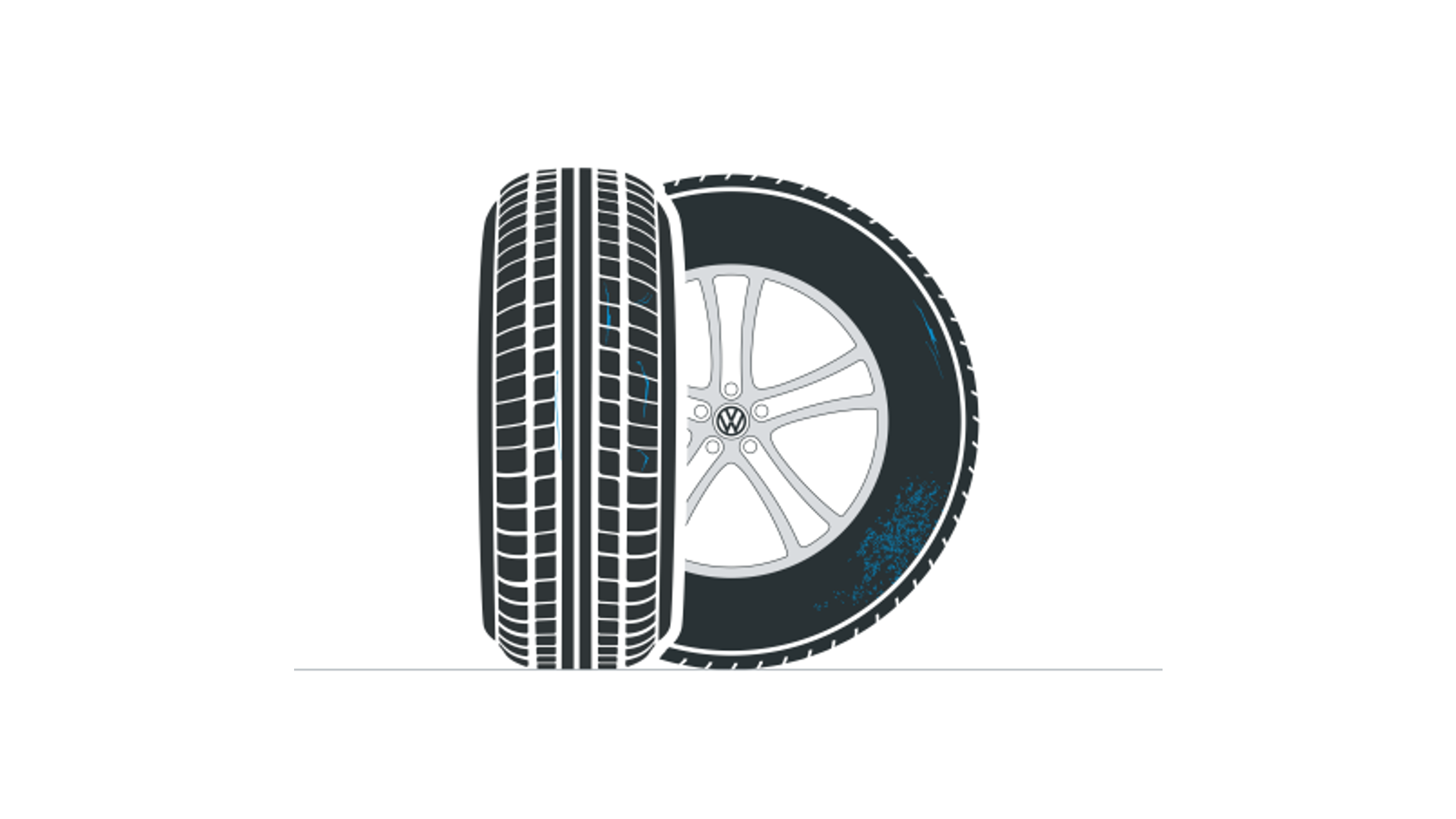
Abnormal tyre wear
If the wear pattern of your car tyre is unevenly distributed over the entire tread, then you should be aware: You can find out which irregular wear patterns you have to deal with here.
Features: Irregular wear on the tyre shoulder in the shape of a sawtooth, louder rolling noise.
Possible causes: Defective shock absorbers, misaligned axle geometry, sporty or over-cautious driving style.
Consequences: Shorter lifespan, more frequent tyre changes and the associated additional costs.
If you discover a sawtooth shape on your tyre, clarify the cause and the further procedure with your specialist workshop.

Characteristics: Uniform wear all around in the middle of the tread.
Possible causes: Too much pressure, therefore mainly the depressed center of the tyre touches the road or exceeds the permitted maximum speed of the tyre.
Consequences: More frequent tyre changes and associated additional costs.
The best thing to do is to ask your specialist workshop - and check the correct tyre pressure regularly.
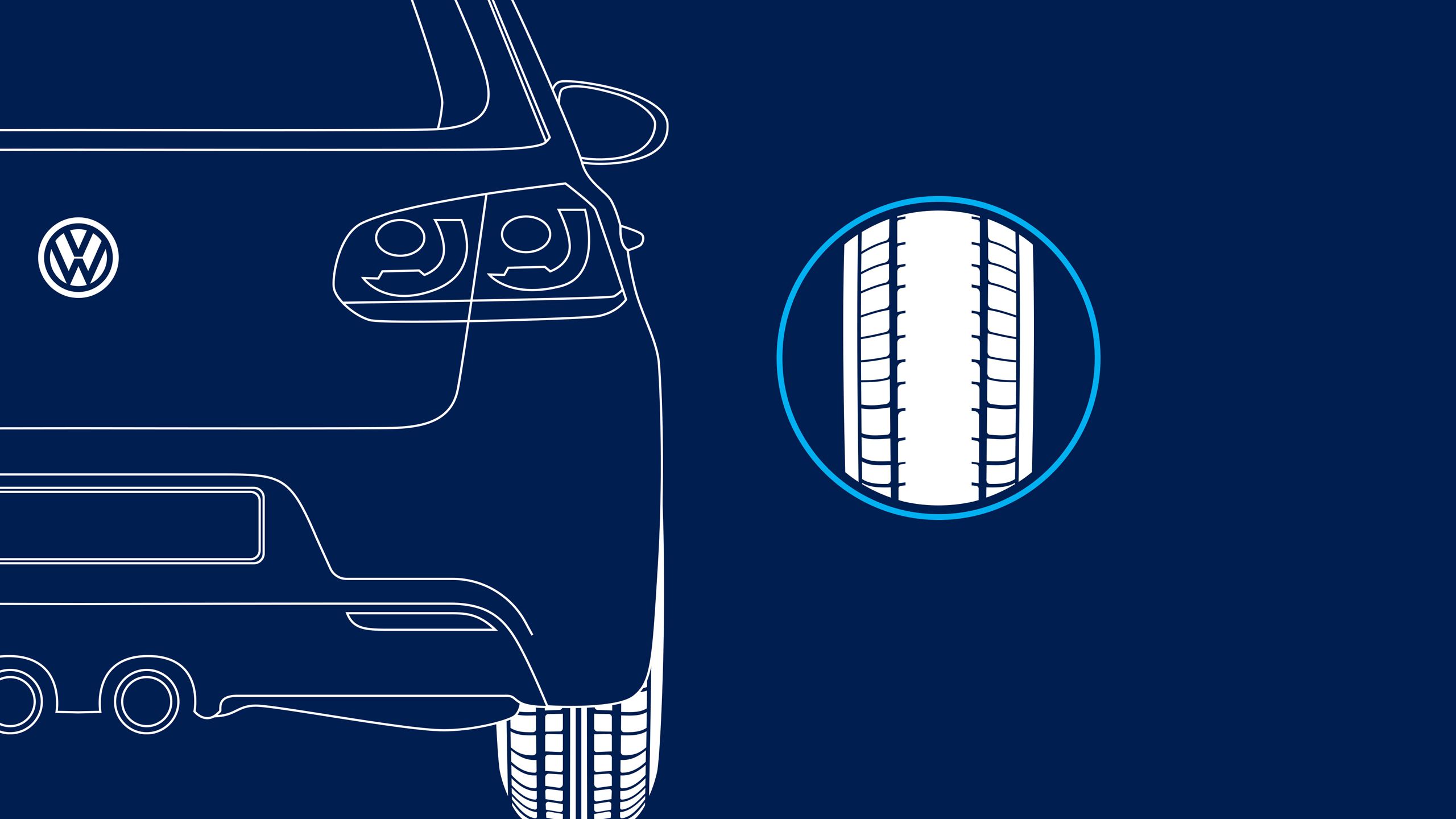
Features: Significantly less worn profile in the middle of the tread than on the two shoulders.
Possible causes: Too low air pressure, because when rolling, mainly the shoulder areas of the tyre touch the road (with even wear) or habitually fast driving through curves with too little tyre pressure (more wear on the outer shoulder).
Consequences: Shorter lifespan and associated additional costs. In extreme cases, the carcass may be damaged or the tyre may suddenly fail because the carcass damage remains even if the tyre is driven with the correct pressure again.
Check the air pressure regularly and contact your specialist workshop if you are unsure.
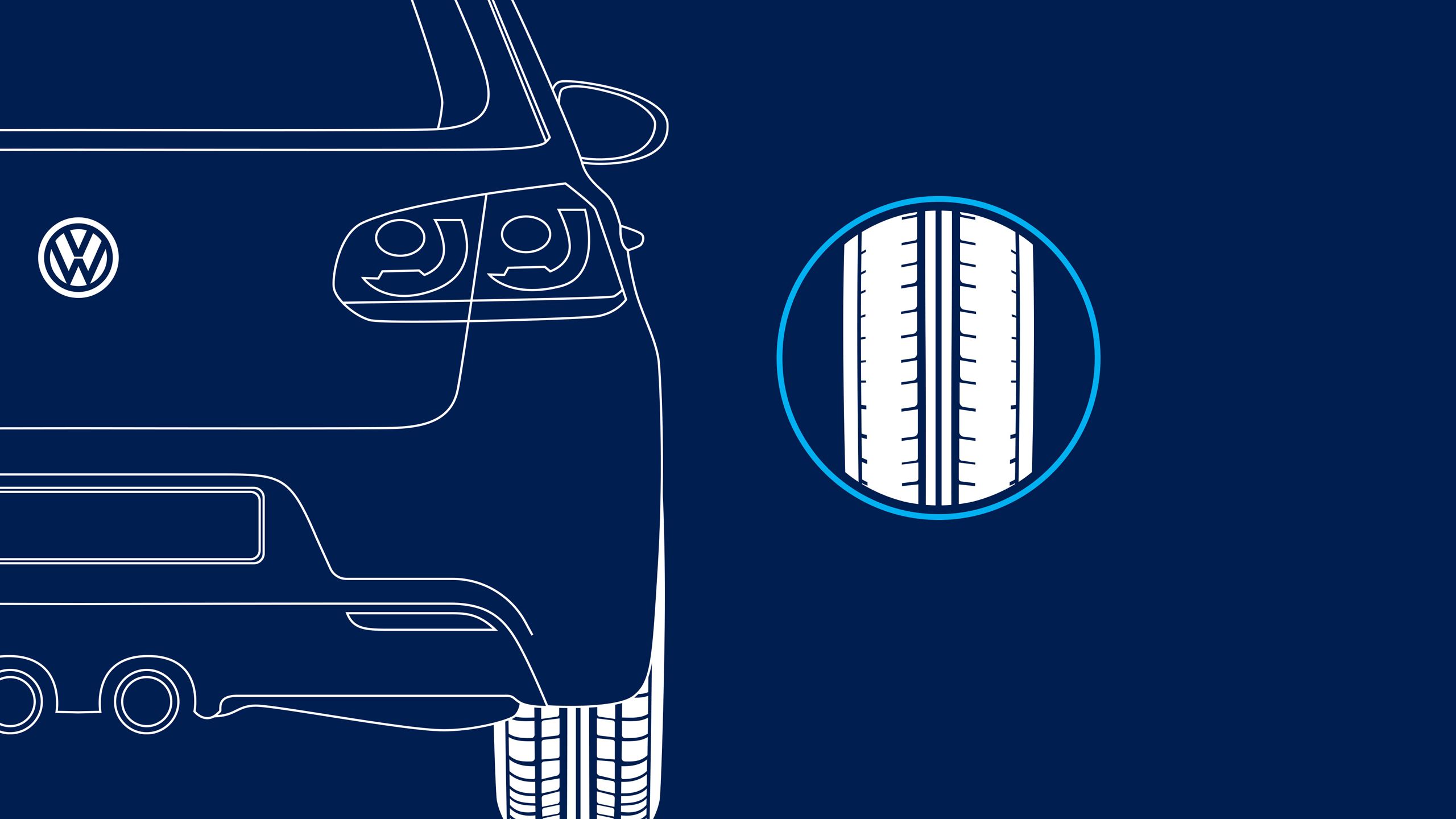
Features: Wear pattern distributed all around the tyre or selectively. Possible causes: Strong or full braking on a blocked tyre (brake plate), usually only in vehicles without ABS, or due to a long service life of the tyre or vehicle in connection with insufficient air pressure (base plate). If you have any questions about the further suitability of the tyre, please contact your specialist workshop.
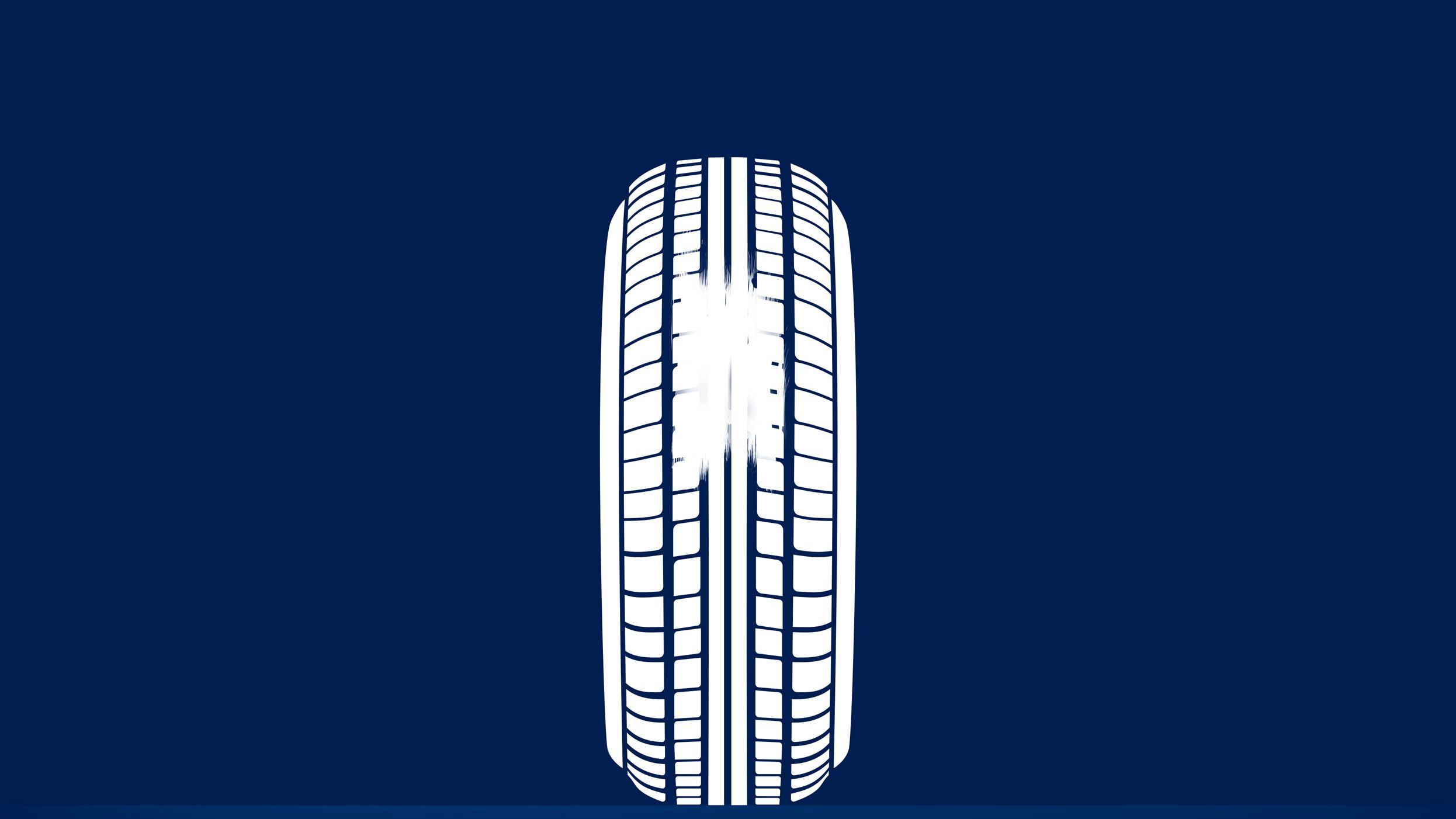
Characteristics: Heavy abrasion on only one shoulder on one or all wheels. Possible causes: Incorrectly adjusted or worn undercarriage, overloading or no approved wheel / tyre combination. With this appearance, you should definitely contact your specialist workshop.
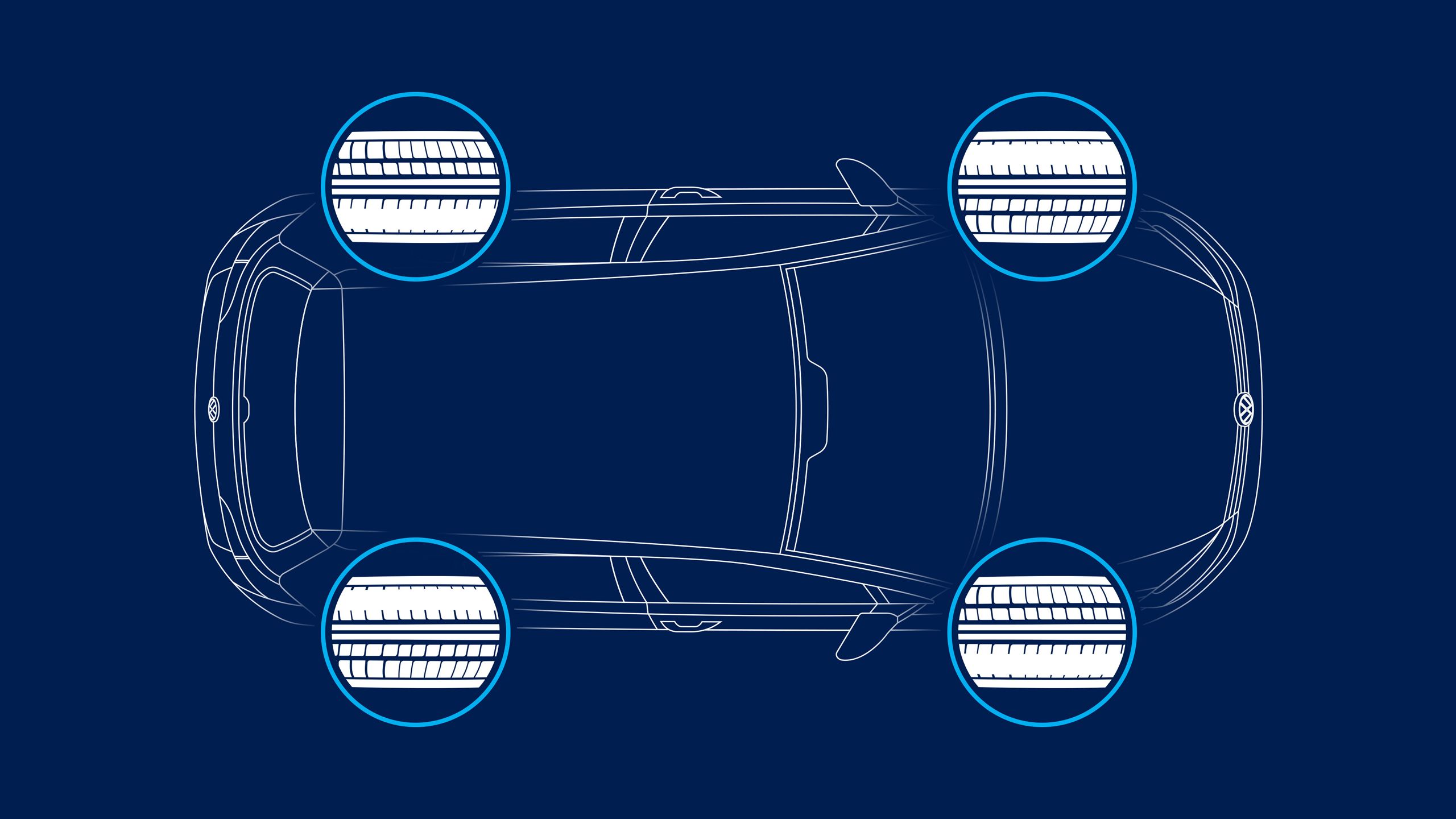
The tyre pressure control system
Less consumption and more driving comfort
Too little tyre pressure quickly leads to tyre damage - the reason for around 40% of all accidents with personal injury. Since November 2014, we have been equipping all Volkswagen passenger cars and SUV models with a tyre pressure control system.
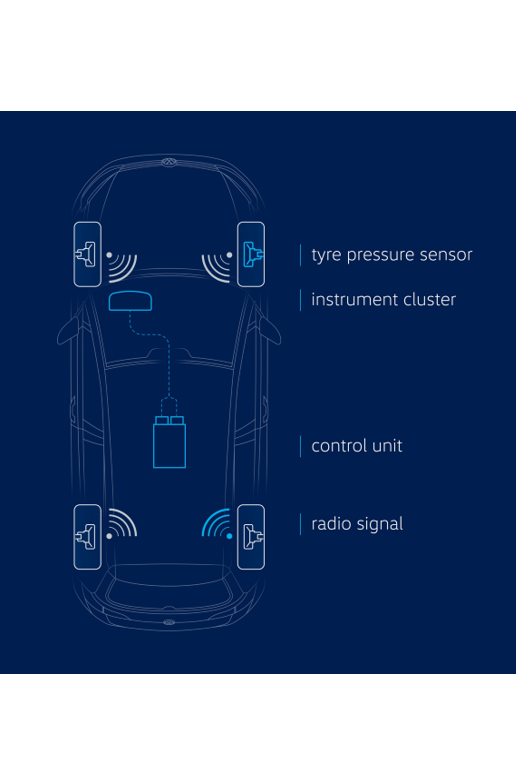
Direct system
How it works:
- A tyre pressure sensor is installed in each wheel.
- It transmits the information to a control unit.
- The on-board computer shows the tyre pressure.
- If the pressure drops, the system warns the driver.
Direct system models, standard:
- Touareg
- Arteon
Models with direct system, on request:
- Tiguan
- Passat
- Touran NF

Indirect system
How it works:
- The system does not measure the pressure, but the speed of the wheels.
- Depending on the tyre pressure, a wheel covers a certain distance during one revolution.
- This results in the speed of the wheel.
- The system calculates the pressure from the speed.
- If the engine speed increases, the pressure drops and the system warns the driver.
Indirect system models:
- Polo
- Golf
- Touran
- Tiguan
- Passat
- Sharan
There are many layers hidden inside your car tyre
Every tyre is made up of a contact surface and a tyre substructure
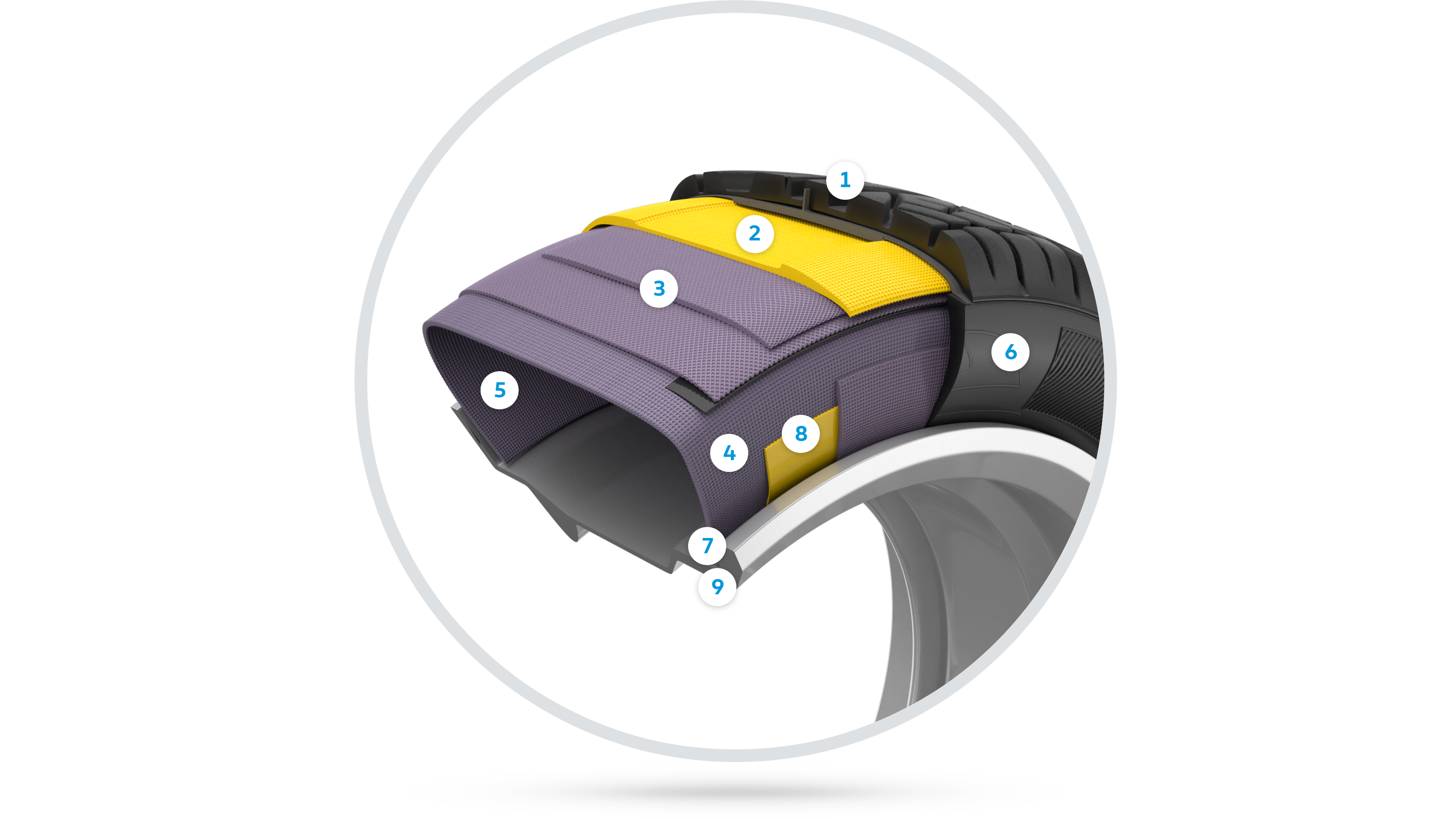
Contact surface and tyre substructure (carcass)
- Tread - for an effective grip on the road and for taking up and draining water
- Jointless bandage - enables high speeds
- Steel cord belts layers - optimise driving stability and rolling resistance
- Textile cord insert - maintains the shape of the tyre, even at high interior pressure
- Inner liner - renders the tyre airtight
- Side wall - protects against lateral damages
- Apex - supports driving stability and steering behaviour and comfort response
- Steel core - ensures a firm fit to the rim
- Tyre bead reinforcement - supports driving stability and precise steering behaviour
How to increase tyre service life
A tyre’s maximum service life is six years – that’s assuming that they’re not damaged, the tread hasn’t been worn down earlier. The DOT number on your tyres will provide information about their age. Here are a few tips for a long tyre service life
Avoid racing starts and do not drive with hot tyres.
Do not hit the kerb when parking: It may damage the rubber outer layer and the inner structure of your tyres.
Lower pressure - higher degree of wear. Check your tyre pressure on a regular basis and increase it if you are driving with a heavy load. But be careful: Too high a pressure can also be damaging.
Measure the tread depth on a regular basis and check your tyres for damages and deformations.
Tyre brands we work with
Watch and learn more
